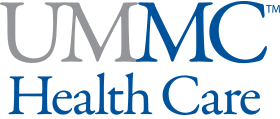- Health Care
- Comprehensive Stroke Center
- About Stroke
About Stroke
Stroke Risk Factors
Everyone has some stroke risk. Some risk factors, according to the American Stroke Association, are beyond our control, including age, sex, race and family history. It is important to know your own risk factors and how they can increase your chance of having a stroke. Then, make it your goal to learn what lifestyle and medical changes you can make to lessen your risk.
Medical conditions
Medical conditions that increase stroke risk include previous stroke, high cholesterol, high blood pressure, heart disease, atrial fibrillation, carotid artery disease and diabetes. These factors can be controlled and managed, even if you have already had issues with any of them in the past. Talk with your health care provider about what will work best for you.
Transient ischemic attack, sometimes called a TIA or "mini stroke," is another medical condition that increases your stroke risk. A TIA is a temporary blockage of blood flow to the brain that resolves on its own, but signals that a full-blown stroke is possible. It shares the same symptoms of stroke, including:
- Weakness, numbness or paralysis on one side of your body
- Slurred speech
- Vision difficulties
- Dizziness
- Severe headache
The main difference between a TIA and a stroke is its duration. Symptoms of a TIA can last from only a few minutes up to 24 hours. If you experience TIA symptoms, get help right away even if symptoms go away.
Lifestyle
Lifestyle factors that contribute to stroke risk include smoking, being overweight and drinking too much alcohol. You can control these lifestyle risk factors by quitting smoking, exercising regularly, watching what and how much you eat and limiting alcohol consumption.
Heredity
A family history of stroke increases the chance you will have one, too. Age is also a factor. The older you are, the more likely you are to have a stroke. Women, African American men and Hispanic men are at the greatest risk.


